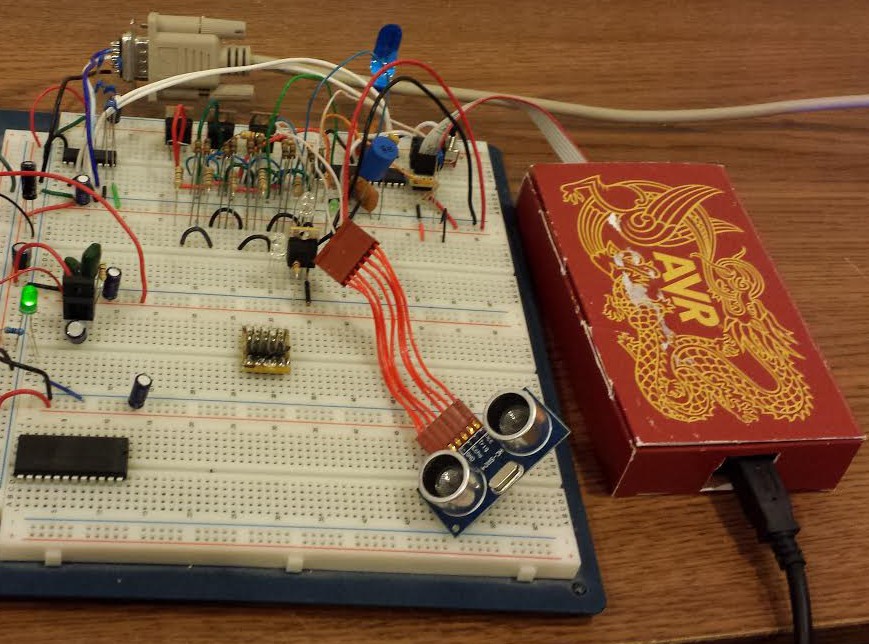I already had on hand a few HC-SR04 ultrasonic range sensors that I purchased from Amazon for another project that got shelved. (These things are CHEAP!) Just to make sure the sensor would work as hoped I hooked it up on a breadboard. I don't currently have an actual Arduino or a clone, so I made do with an ATmega168A that I had on hand.
Ignore the extraneous components. They are leftovers from my last project and I was lazy and left them there since they didn't interfere with anything. The cable to the sensor obviously has too many wires, but I already had it on hand.
I compiled the example code for the NewPing library available at:
http://playground.arduino.cc/Code/NewPing
I first attempted to flash the Arduino bootloader to the chip and hooked the ATmega168 + MAX232 transceiver up to my USB to Serial Adapter. Unfortunately the Arduino IDE couldn't see it, so I gave up on the bootloader. I turned on the verbose compiler messages in the Arduino IDE so I could see where the hex file was being dumped. Once I located the hex file, I used Atmel Studio 6.1 and my AVRDragon to flash it with the test code. (I am much more familiar with Atmel Studio and avr-gcc then I am with the Arduino environment, though I'm by no means an expert.) Notice the ultra-fancy enclosure for the AVRDragon?
When I hooked the serial output to my PC it output only garbage when I set up Br@y++ Terminal for 115.2K baud. The example code was set to output at 115.2K, but I guessed that the clock may be at fault. I was running on the 8 MHz internal RC oscillator, instead of the 16 MHz external crystal that a normal Arduino would have. (I didn't have any 16 MHz crystals in my junk box.) I set the terminal baud rate to 57.6K and it worked!
 Big Joe
Big Joe
Discussions
Become a Hackaday.io Member
Create an account to leave a comment. Already have an account? Log In.